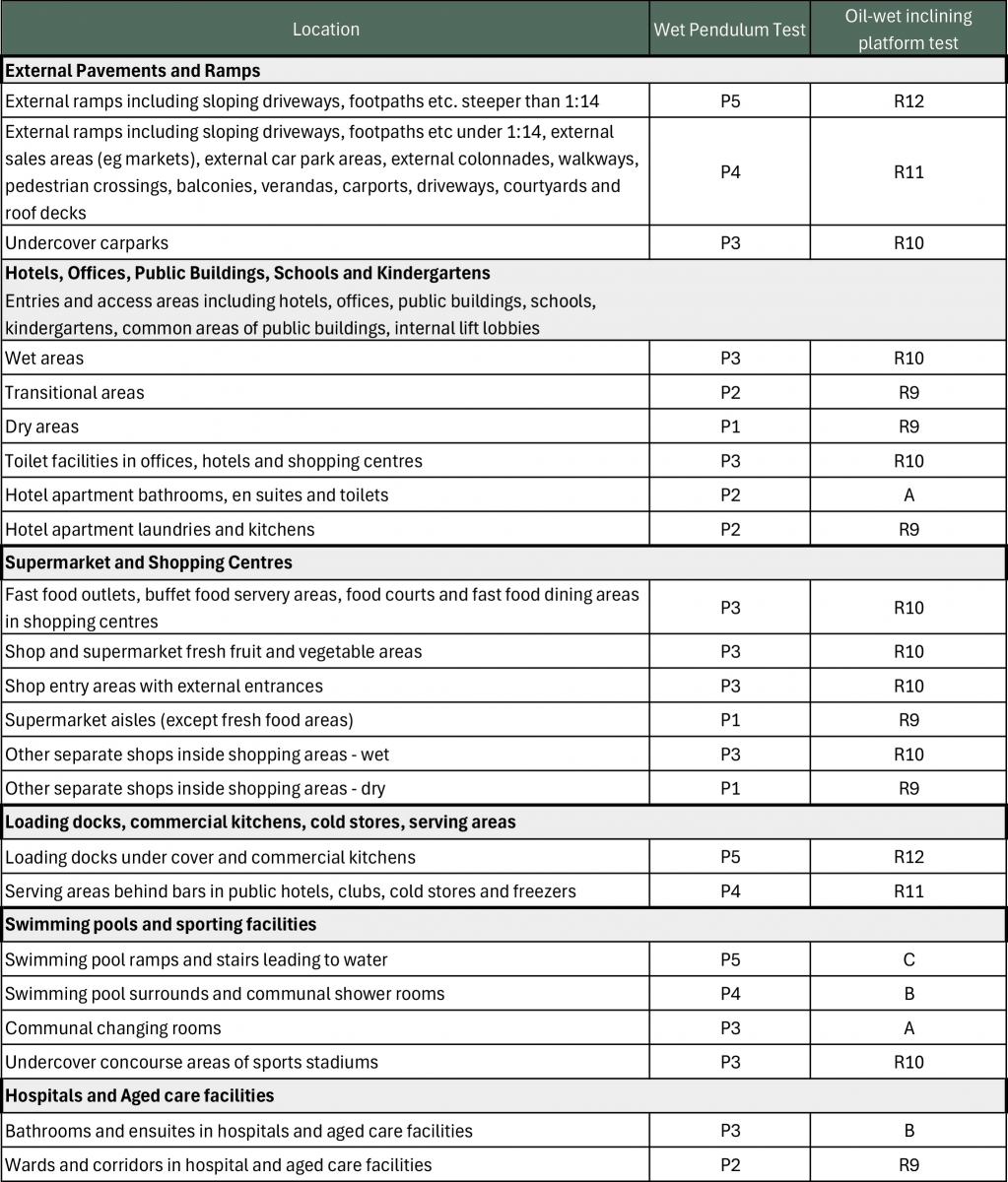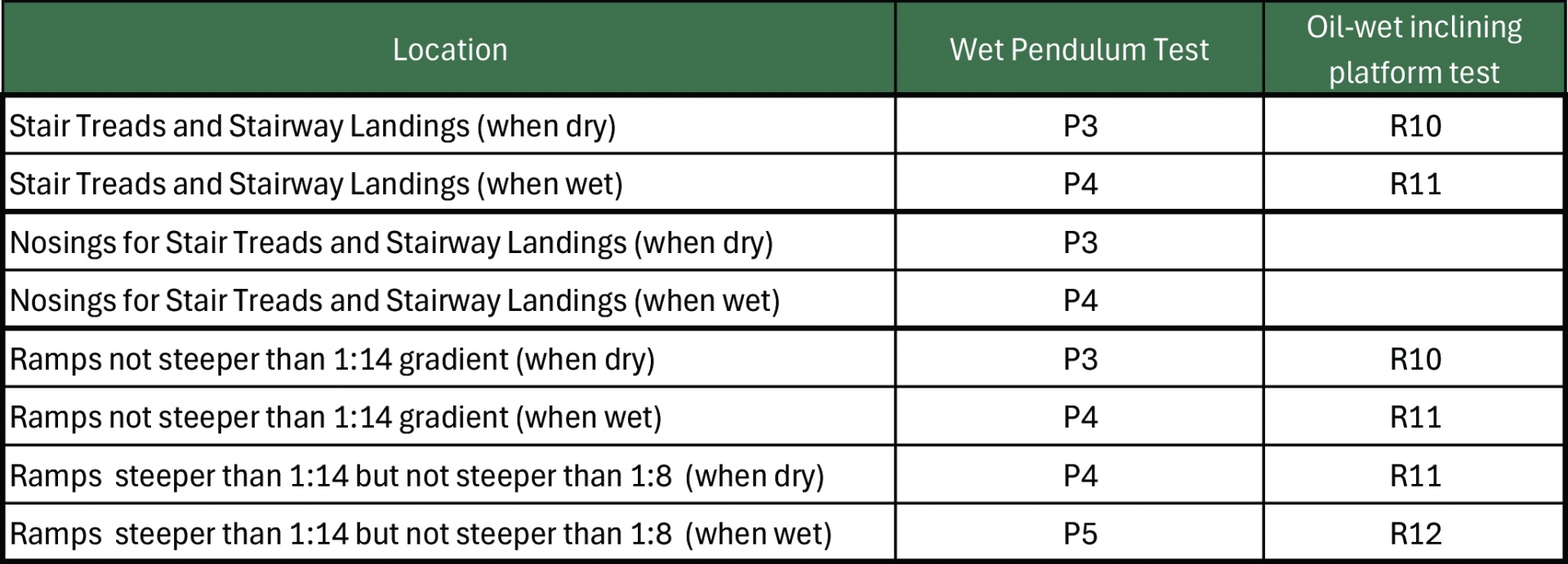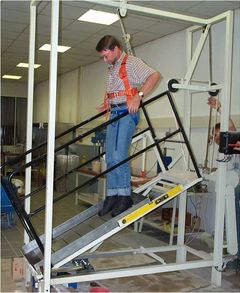Antislip Standards - Online
This document is to help homeowners and specifiers interpret the NZ building code and ensure the perfect tile makes its way into any situation with safety in mind.
This is a guide only. The building code itself is vague on detail so assumptions and a common sense approach based on expected usage is recommended. Tile Depot are here to help but take no responsibility for your project where many site specific factors are to be considered.
So what does the law say?
The only reference to slip resistant requirements in the Building code is AS/NZ3661.1 section D1 - Access Routes. D1/AS1 is a publication of Acceptable Solutions to ensure compliance with Section D and it now covers a wider scope than just accessways particularly for commercial situations.
D1/AS1 now refers to both Pendulum testing (SRV not less than 39) as well as Ramp testing which provides an R value (R9, R10, R11). The two testing methods are quite different and the result of one does not always directly correlate to the other.
What are these testing methods?
The Pendulum Test
The pendulum slip test consists of a weighted foot with a test slider that swings down and slides across the surface wetted with water. The weighted foot comprises a spring loaded rubber test slider that exerts a prescribed force over the tile as it slides across the surface. The higher the number, the lower the risk of slipping.
In certain situations, New Zealand rules require tiles to have an SRV of 39 or higher. The problem is that tiles rated P3 can fall anywhere between SRV 35–44. This means some P3 tiles meet the magic 39 number, and some don’t. Because of this uncertainty, people often play it safe and choose P4 tiles instead, even when a suitable P3 option exists.

The Ramp test
The Ramp Test involves a subject walking across the tiles under scrutiny, which are in turn fixed to an adjustable ramp. The subject wears specified safety footwear, and the surface of the tiles are covered in an oil. The angle of the ramp is increased until the subject can no longer maintain balance, and at this point the angle of the ramp is recorded.
The steeper the angle, the higher the slip resistance, and the higher the score. The tile is awarded an “R – rating” between R9 and R13, with the higher rating indicative of higher resistance. The below table shows the risk profile for each rating. Note that the lowest score possible is R9.
One of the disadvantages of this procedure over any other is that it needs to be carried out in a laboratory. Often situations arise, perhaps where there’s been an accident or a claim, where measurements need to be taken after installation. Clearly this ramp test is of no benefit in these circumstances and there are no ramp testing facilities in New Zealand.

Where do I need to use an ‘antislip’ tile ?
Residential Situations
Accessways: Only the approach to the main entrance and not inside the house. A Pendulum test rating of 39 or higher is required. We recommend a minimum P4 pendulum or a ramp test rating of R11.
Internal living areas: No slip rating is required. Living areas, Bathrooms & Kitchens are considered dry under normal circumstances.
Swimming pools surround: The immediate pool surround requires a minimum P4 or R11. This is a recommendation only.
External paths, patios, verandahs: No guidance given but refer to Table 3B from HB 198 (shown on page 6) which recommends a minimum P4 or R11 for areas with less than 1:14 slope.
Sloping access including stairs: When a slope increases there is a logical requirement for an increased coefficient of friction (COF). Again, no requirement given but for guidance refer to Table 3A.
Commercial Situations
Accessways expected to become wet during normal use: The approach to and transition zone into a public building requires a 39 Pendulum test or R11 ramp test rating. Internally this can be achieved by providing a mat of at least 1.8mtrs length, if an antislip tile is not used. (ref D1/AS1 2.1.6)
Sloping access including stairs: ref D1/AS1 2.1.5. As per domestic criteria.
Other Commercial Situations: We recommend using Table 3B from HB198 for appropriate Pendulum or R rating. This is a valuable resource for tile specifiers and we encourage our staff and clients to use this as a reference for any commercial project.
TABLE 3B HB198
PEDESTRIAN FLOORING SELECTION GUIDE - MINIMUM PENDULUM OR RAMP RECOMMENDATIONS FOR SPECIFIC LOCATIONS

Other considerations include the amount and type of traffic expected, the product characteristics, exposure to contaminants, environmental factors, management policy and maintenance practices, OSH requirements, special provisions (i.e. handrails) and alternative information sources (warning signs).
Commercial stair nosings, landings and ramps
Table 3A
HB 198:2014
MINIMUM WET PENDULUM TEST OR OIL WET INCLINGING PLATFORM CLASSIFICATIONS THAT ARE DEEMED TO SATISFY THE BUILDING APPLICATIONS IN THE NATIONAL CONSTRUCTION CODE (AUSTRALIAN STANDARD)

 Ramp test in action.
Ramp test in action.


